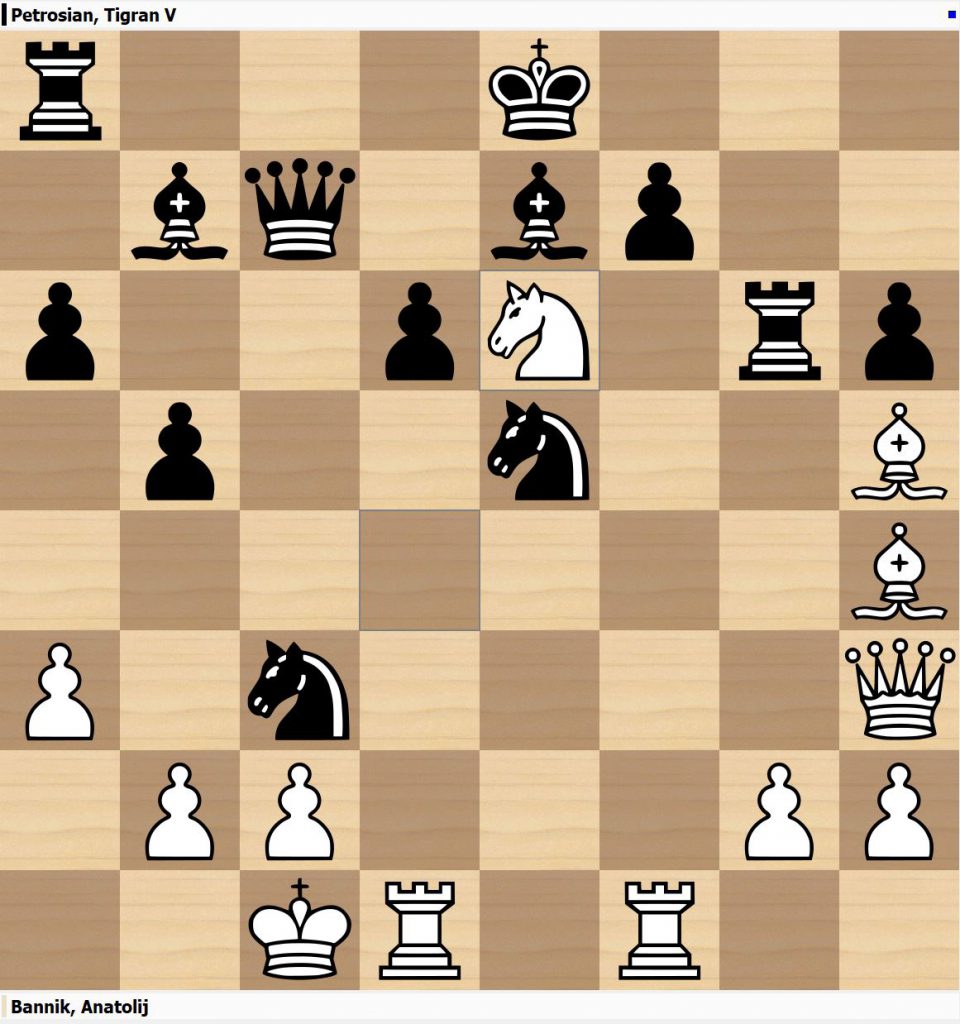Quite a while ago, Steve Giddins gave me some photocopies of articles from old Russian magazines. They were game collections of Russian players, some known, some very obscure to the West. One of the players who fell into the latter category was the Ukrainian player Anatoly Bannik. Bannik won the Ukrainian Championship 5 times and qualified seven times for the final of the USSR championship in the fifties and sixties. Looking through his games and seeing the players he defeated in his career, you realise again how amazingly strong the USSR was in those days! The game we look at here is one of Bannik’s better-known victories, a thrilling win in the 6.Bg5 Najdorf against future World Champion Tigran Petrosian.
Bannik,Anatolij – Petrosian,Tigran V [B99]
URS-ch24 Final Moscow (15), 11.02.1957
[matthewsadler.me.uk]
1.e4 c5 2.Nf3 d6 3.d4 cxd4 4.Nxd4 Nf6 5.Nc3 a6 6.Bg5 e6 7.f4 Be7 8.Qf3 Qc7 9.0–0–0 Nbd7 10.Qg3
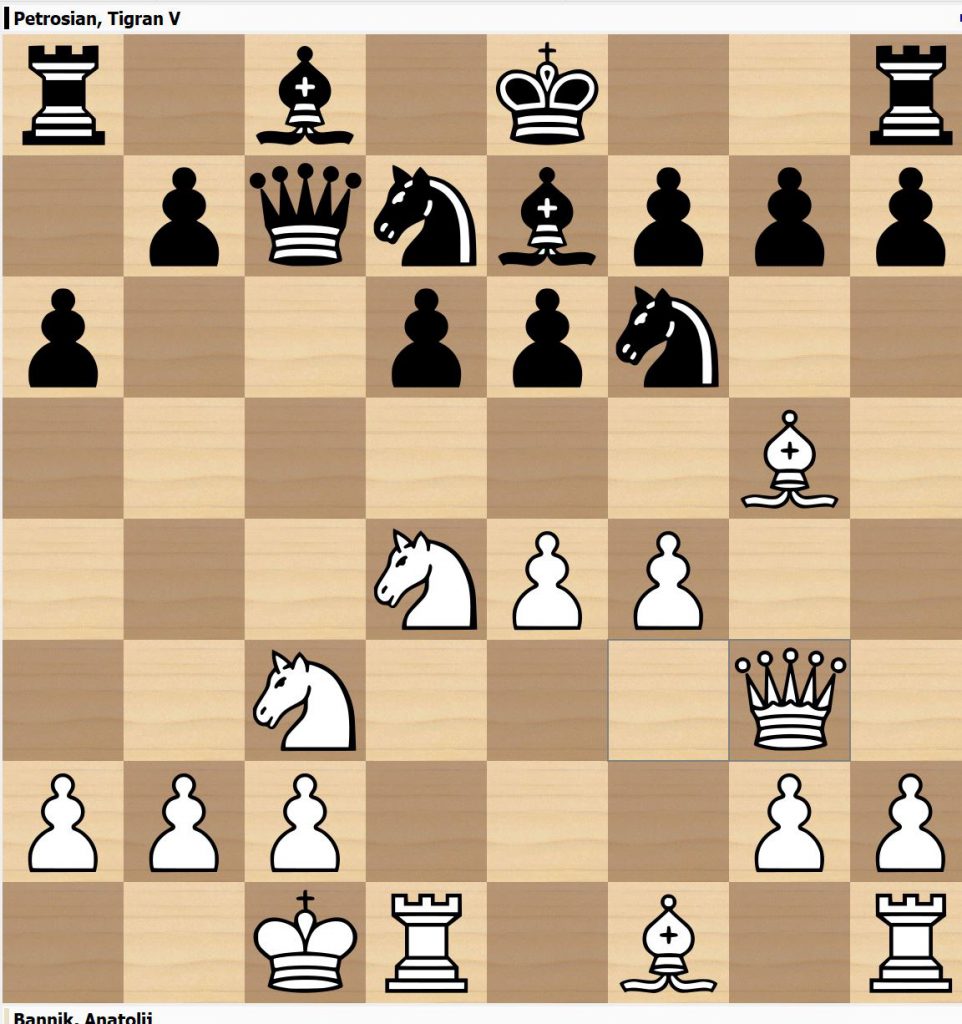
An uncommon try in this position: 10.g4 and 10. Bd3 have been the main moves for many years.
10…h6 11.Bh4 g5
A typical idea for Black, made particularly effective by the presence of the queen on g3.
12.fxg5 Rg8 13.Be2
Developing and preventing …Nh5.
13…Ne5
A typical follow-up to the …g5 idea. Black makes sure he can exchange a White knight if it comes to f3 to support the captured g5–pawn. Black now intends to add pressure on g5 with either …Nfd7 or …Nh7 and then recapture on g5 with …hxg5. The net result of this manoeuvre is that Black has secured control of the e5 square for his pieces.
14.g6
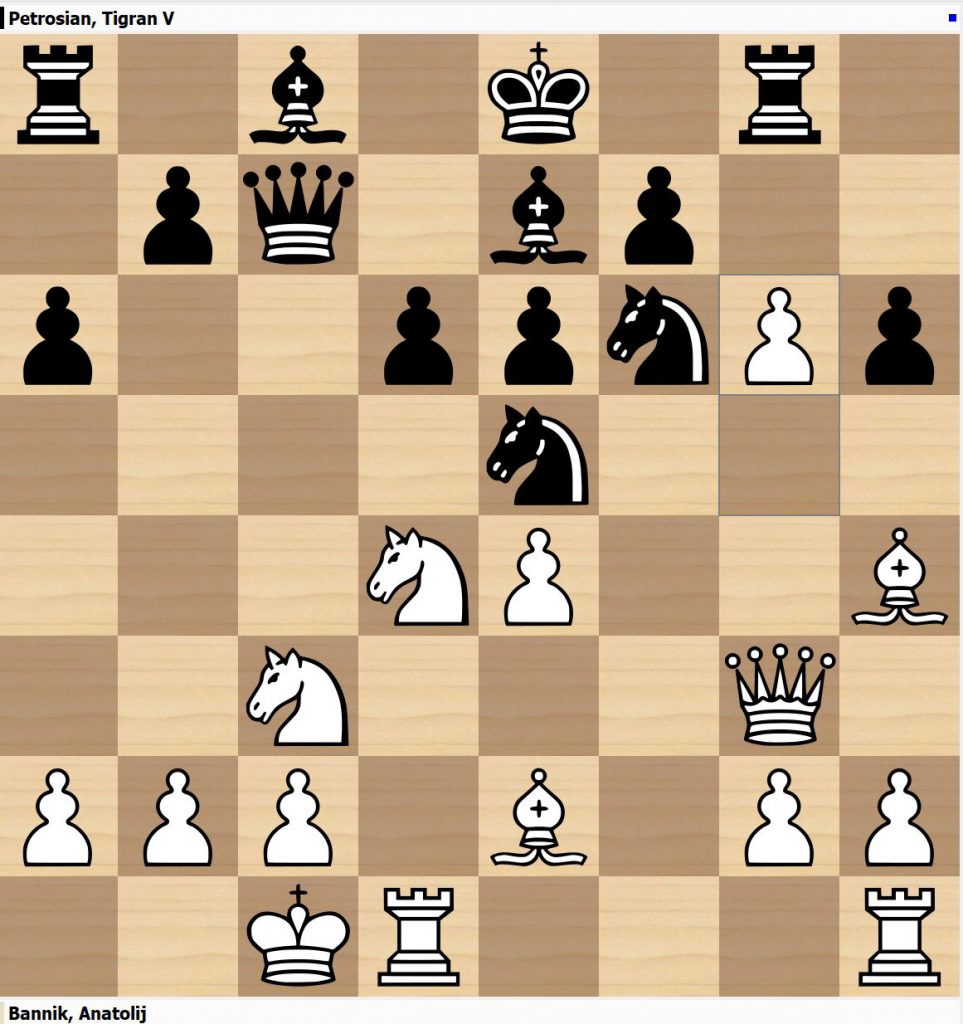
An unusual move, played just 3 times… but by such players! Bannik, Tal and Keres! It seems illogical to give Black the pawn back at once with tempo – after 14…Rxg6 – and not force Black to spend some moves recapturing the g5–pawn. However the move has certain tactical points: 1. The h4–d8 diagonal is kept open, so White can develop some pressure against the knight on f6 together with doubled rooks on the f-file.
2. After 14…Rxg6, the Black rook is lured out to a square where it can be attacked by Bh5. Note however that Black also has some gains from the position of the rook on g6: the knight on f6 gets additional protection while the e6–pawn may also benefit from this.
3. After …Rxg6, Qh3 the queen is eyeing the e6 square for future sacrifices.
14…Rxg6
It’s strange that the normally cautious Petrosian chose the most active reply!
14…Nxg6 was Bobby Fischer’s choice against Tal two years later and it looks rock-solid! 15.Rhf1 Nxh4 16.Qxh4 Rg6 17.Bd3 (17.Rd3 Qc5 18.Qf2 Qg5+ 19.Rd2 Bd7 was also nothing special in Keres, P-Johansson,M Stockholm 1962 ½–½ (38)) 17…Ng4 18.Qh5 Ne5 19.Nf3 Qc5 20.Nxe5 Qxe5 21.Qxe5 dxe5 ½–½ (35) Tal,M-Fischer,R Zuerich 1959
15.Qh3 b5 16.a3
…b4 would be rather awkward so White has to spend a move defending it.
16…Bb7 17.Rhf1 Nxe4
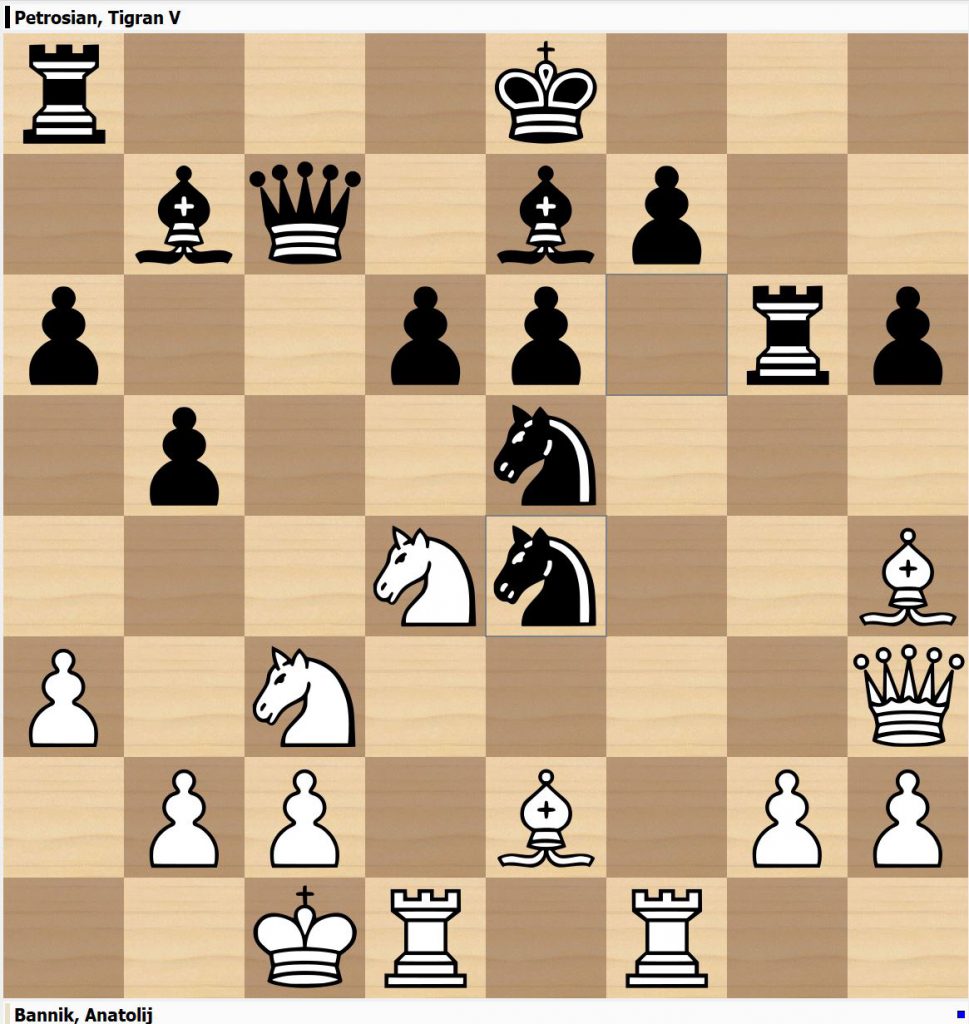
Again Petrosian takes action… and it’s 100% correct. White is quite well-prepared against standard Black play. 17…Nxe4 not only grabs a central pawn, but also puts immediate tactical pressure on White’s position: …Nxc3 is particularly annoying, doubling White’s queenside pawns and introducing …Bxg2 into the position.
a) 17…0–0–0 18.Bxf6 Rxf6 (18…Bxf6 19.Nd5) 19.Rxf6 Bxf6 20.Nd5 is very unpleasant for Black – that queen on h3 coming in handy! 20…Bg5+ 21.Kb1 Qc5 22.b4 Qa7 23.Qc3+ Kd7 I didn’t see a clear win here for White but I was sure there would be something! 24.Nxe6 Rc8 25.Nc5+ Ke8 26.Nc7+ Rxc7 27.Rxd6 Nd7 28.Bg4 Nf8 29.Qe5+ Re7 30.Qh8 with many threats such as Bd7+ is the engine display of pyrotechnics.;
b) 17…Rc8 is a better try and looks decent for Black. 18.Bxf6 (18.Rf4 is another idea, defending e4 and preparing to double against the knight on f6.) 18…Rxf6 19.Bxb5+ axb5 20.Ndxb5 Qb6 21.Rxf6 Bxf6 22.Nxd6+ Ke7 23.Nxc8+ Bxc8 I wasn’t sure how good this was for White: Black has very nice-looking pieces.
18.Bh5
The most consistent move. Now the two plans collide!
18…Nxc3 19.Nxe6

A spectacular position! In fact, Black has a plethora of defensive possibilities that are not too complicated to calculate. However, optically it’s hard to imagine they work: they look so dangerous!
19…Qc4
A fantastic multi-purpose move: it attacks e6, h4 and f1 (after …Nxd1!) Unfortunately, it’s too sophisticated for the position! White is now away from the brink of defeat!
a) 19…fxe6 20.Qxe6 Nxd1
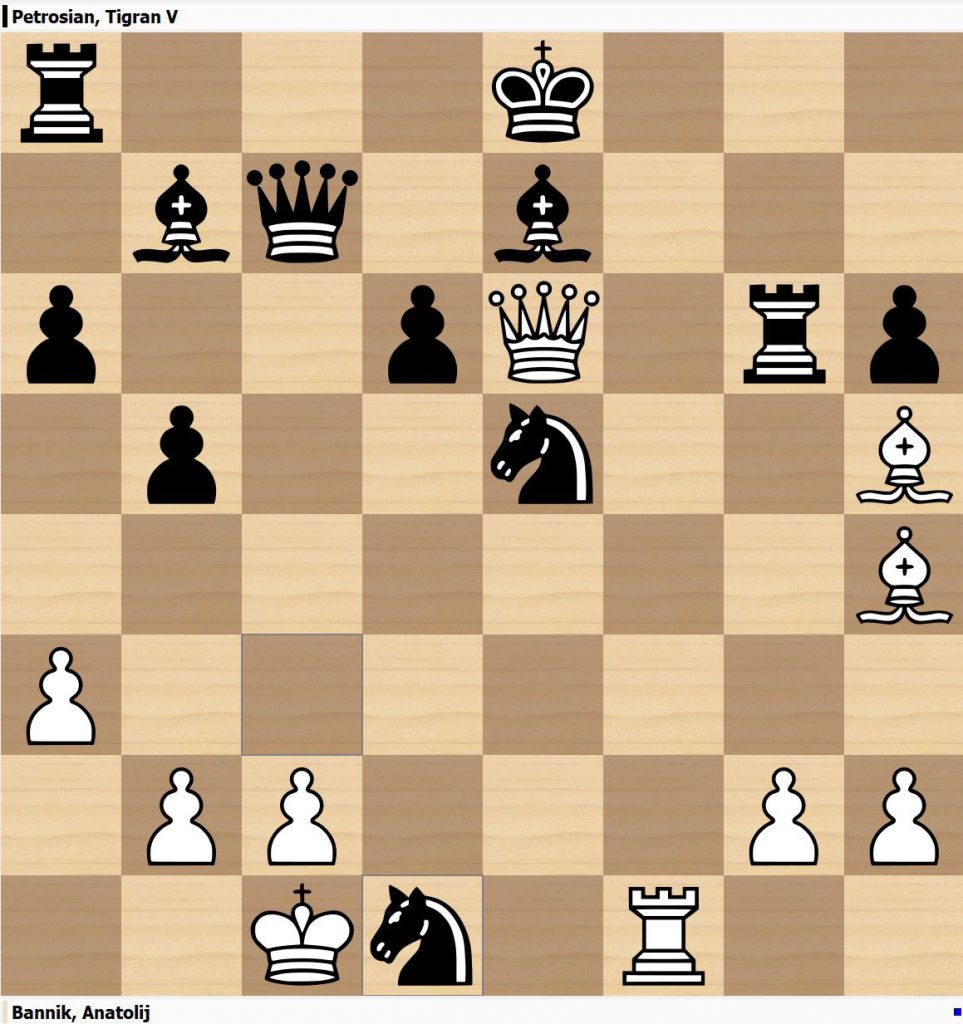
looks suicidal and… 21.Bxg6+ Nxg6 22.Qxg6+ Kd7 23.Bxe7 (23.Rf7 Re8 24.Qf5+ Kc6 works fine for Black.) looks terminal for Black.
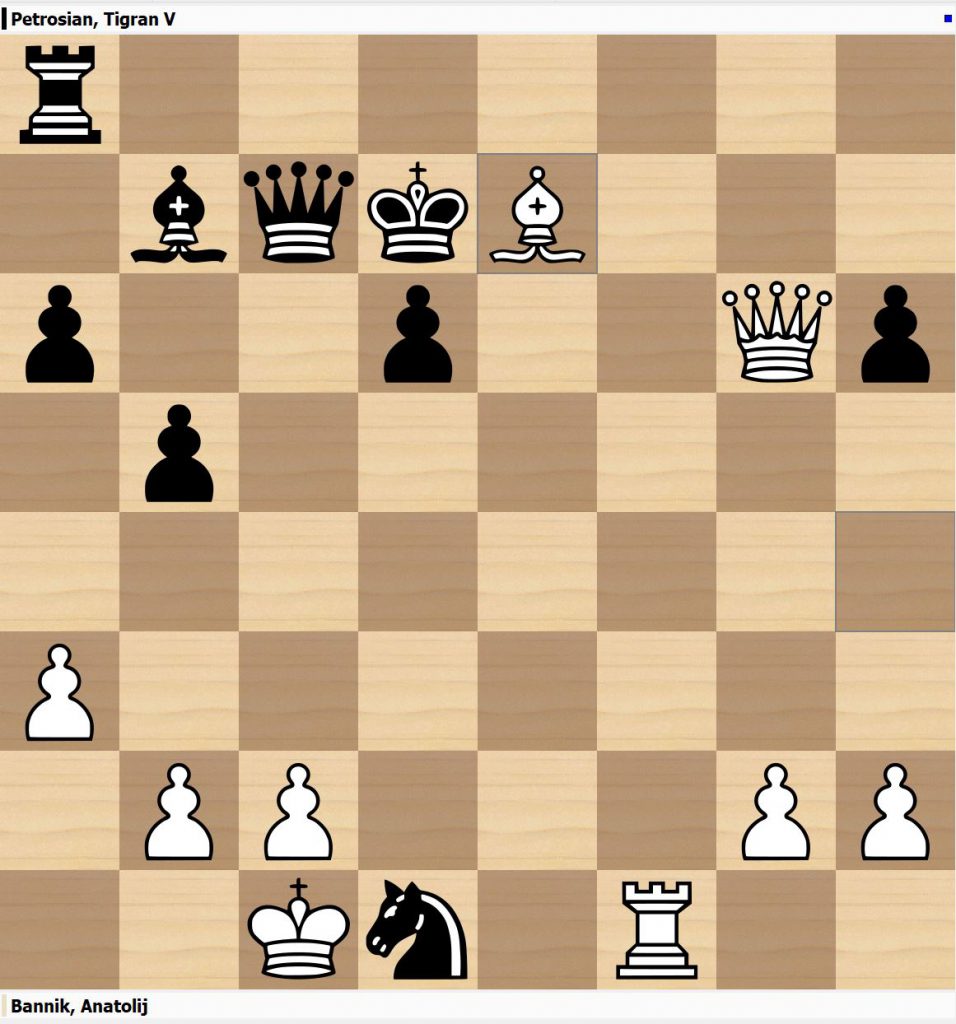
This was my main line and my reason for rejecting 19…fxe6. However…! 23…Ne3 with the dual threat of …Nxf1 and …Qxc2+ 24.Rf7 (24.Bxd6 Qxc2+ 25.Qxc2 Nxc2 26.Bg3 Be4 wins) 24…Bd5
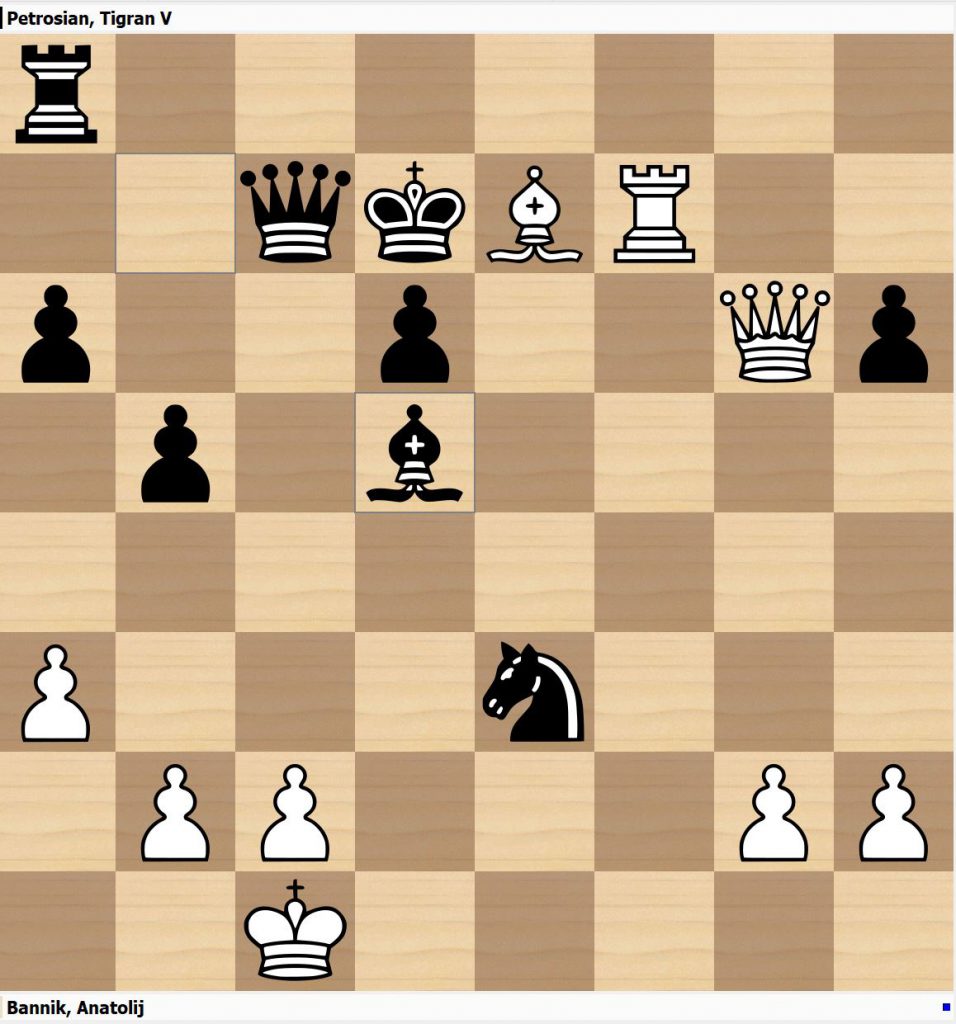
The amazing point! There is no good discovered check! 25.Rg7 (25.Bxd6+ Bxf7 26.Qxf7+ Kxd6 wins) 25…Kc6 completes the astonishing defence, leaving White a piece down!;
b) 19…Rxe6 was the idea I thought worked…and it does too, though less convincingly
a) 20.Bxf7+ Nxf7 21.Qxe6 Ng5 22.Bxg5 hxg5 23.bxc3 Qc4 is good for Black as 24.Rxd6 Qxf1+;
b) 20.Qxe6 Nxd1 21.Rxf7 - 20.Rxf7 (21.Bxf7+ Kd8 22.Bh5 (22.Rxd1 Nxf7 defends d6 against Rxd6+! 23.Qxf7 Bxh4) 22…Qd7 23.Rf8+ Kc7 lets the king escape!) ;
c) 20.Rxf7 Nxf7 21.Qxe6 Nxd1 22.Qxf7+ Kd7 23.Qxe7+ Kc6 escapes for Black as the knight on d1 covers checks from f2! 24.Qe6 when the knight is trapped and White has some hopes to survive with 2 dangerous bishops.
20.Bxg6 Ne2+
Another suboptimal move – it feels wrong intuitively to release the attack on the rook on d1 (and Black’s subsequent attack on the rook on f1). After 20…Ne2+, the White king suddenly looks very safe – much better than Black’s which is a big plus in a practical game. There were still 2 good ways for Black to play.
a) 20…Nxd1
a1) 21.Ng7+ was my attempt. 21…Kd8 (21…Kf8 22.Bxe7+ Kxg7 23.Bf6+ Kg8 (23…Kxg6 24.Qf5#) 24.Qxh6) 22.Bxe7+ Kxe7 23.Nf5+ Kd8 The only move 24.Rxd1 fxg6 25.Nxd6 Qf4+ 26.Kb1 Kc7 (26…Bc6 was my other idea 27.Nxb5+ Bd7 28.Qe6 axb5 29.Qg8+ Kc7 30.Qxa8 Nc6 with equality is the engine’s best line. I’d tend to prefer White however due to the safer king.) 27.Qc3+ Kb6
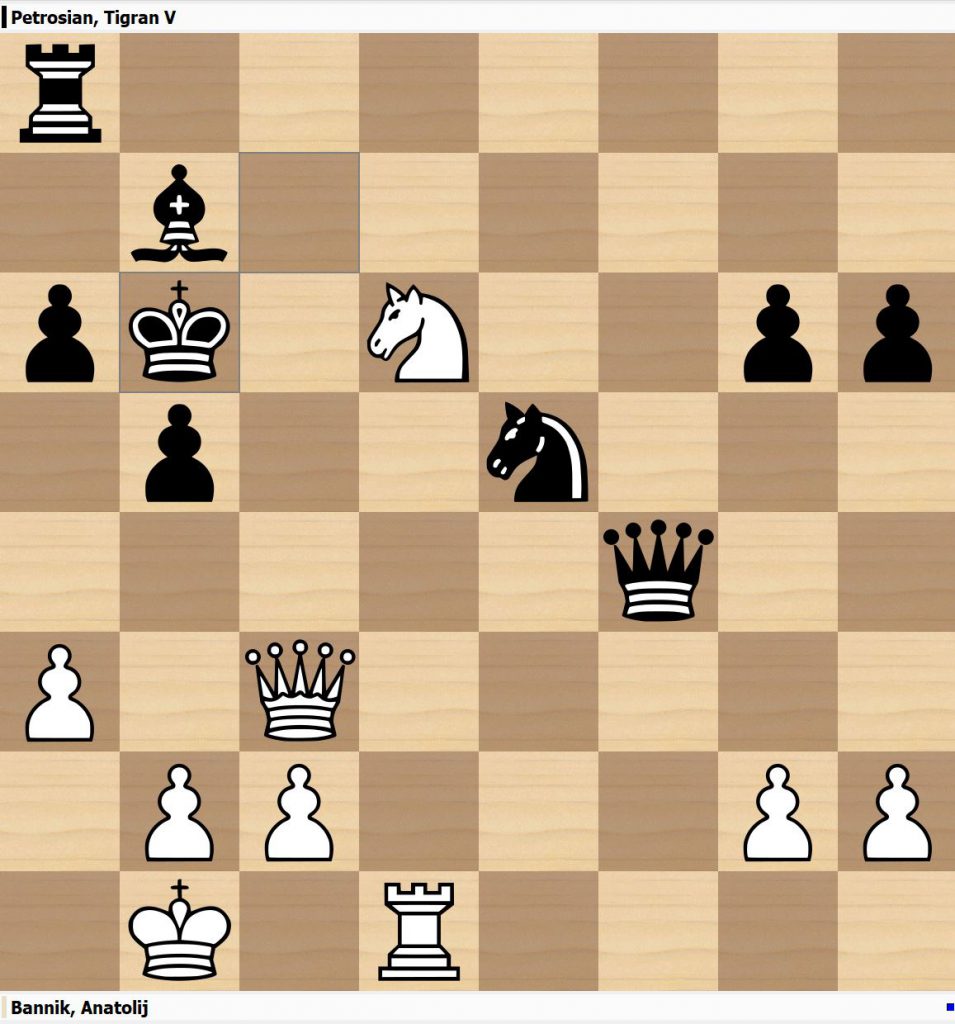
(27…Nc6 28.Qg7+; 27…Bc6 28.Qa5+) 28.g3 (28.b4 tempted me greatly until I saw 28…Bc6 29.Qc5+ Kc7 30.g3 Qf3) 28…Qg4 29.Qe3+ (29.Rd4 Qf3 30.Qe1 Qh1) 29…Kc7 30.Nxb5+ (30.Rd4 Qg5 is suddenly unpleasant for White 31.Qc3+ Nc6) 30…axb5 31.Qxe5+ Kb6 32.Qe3+ is a draw by perpetual;
a2) 21.Rf4 is pointed out by Soltis and is the engine’s top line.
a21) 21…Nf2 seemed like a nice counterblow but.. . 22.Ng7+ Kf8 23.Bxe7+ Kg8 (23…Kxe7 24.Qh4+) 24.Bh7+ Kh8 (24…Kxh7 25.Qf5+) 25.Rxf2 and White will not even be behind in material after Black captures one of his pieces!;
a22) 21…Qe2 22.Bxf7+ Nxf7 (22…Kd7 23.Nd4+) 23.Nc7+ Kd8 (23…Kf8 24.Qf5 is winning for White) 24.Rxf7 and to my surprise, White is completely winning! The queen on c4 obviously performed a very important role in defending f7!;
a23) 21…Qa2 22.Bxf7+ Nxf7 23.Ng7+ Kd8
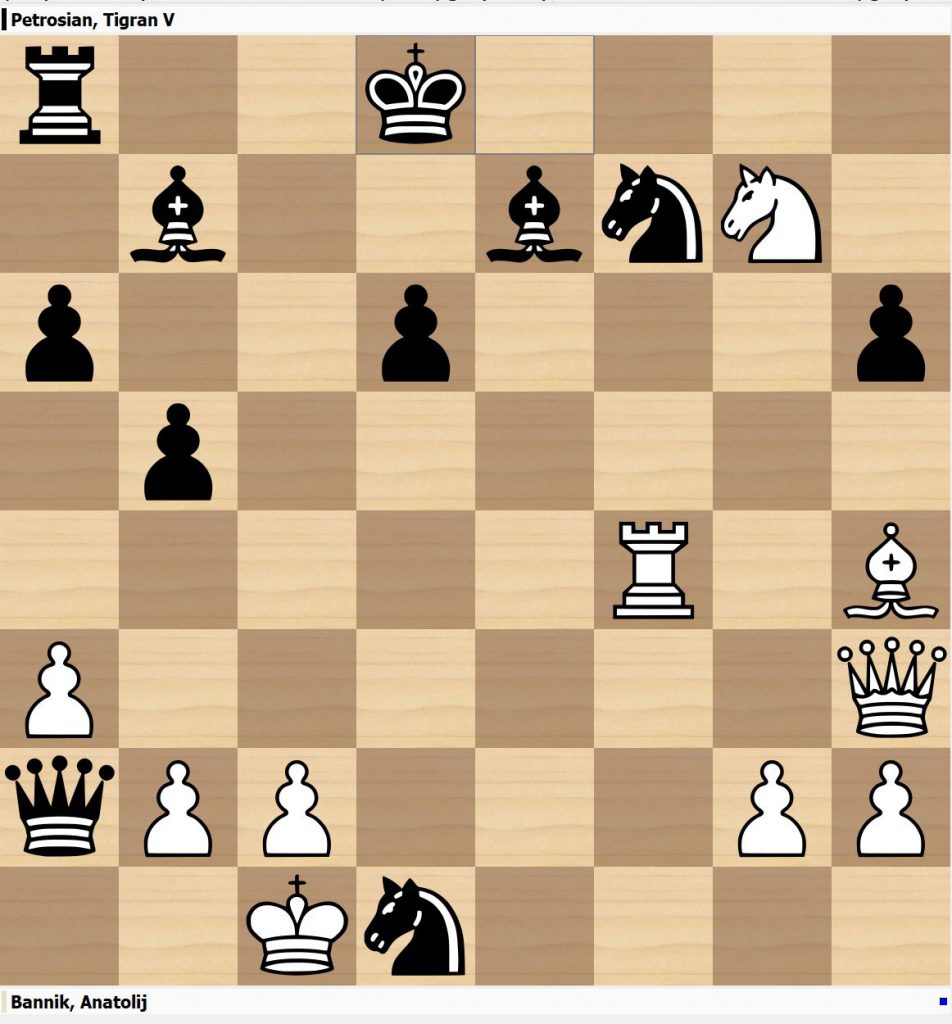
24.Ne6+ Ke8 is the engine draw by repetition (24…Kc8 25.Rxf7 is dangerous only for Black.) )
b) 20…Bxh4 21.b3 Qc8 (21…Qc6 22.Qxh4 Nxd1 23.Rxf7 Nxf7 24.Qf6 Qd7 25.Ng7+ Kf8 26.Nf5) 22.Ng7+ (22.Qxh4 Qxe6) 22…Kf8 23.Qxh4 Ne2+ (23…Nxd1 24.Nf5) 24.Kb1 (24.Kb2 Nxg6 25.Qf6 Qc3+) 24…Nc3+
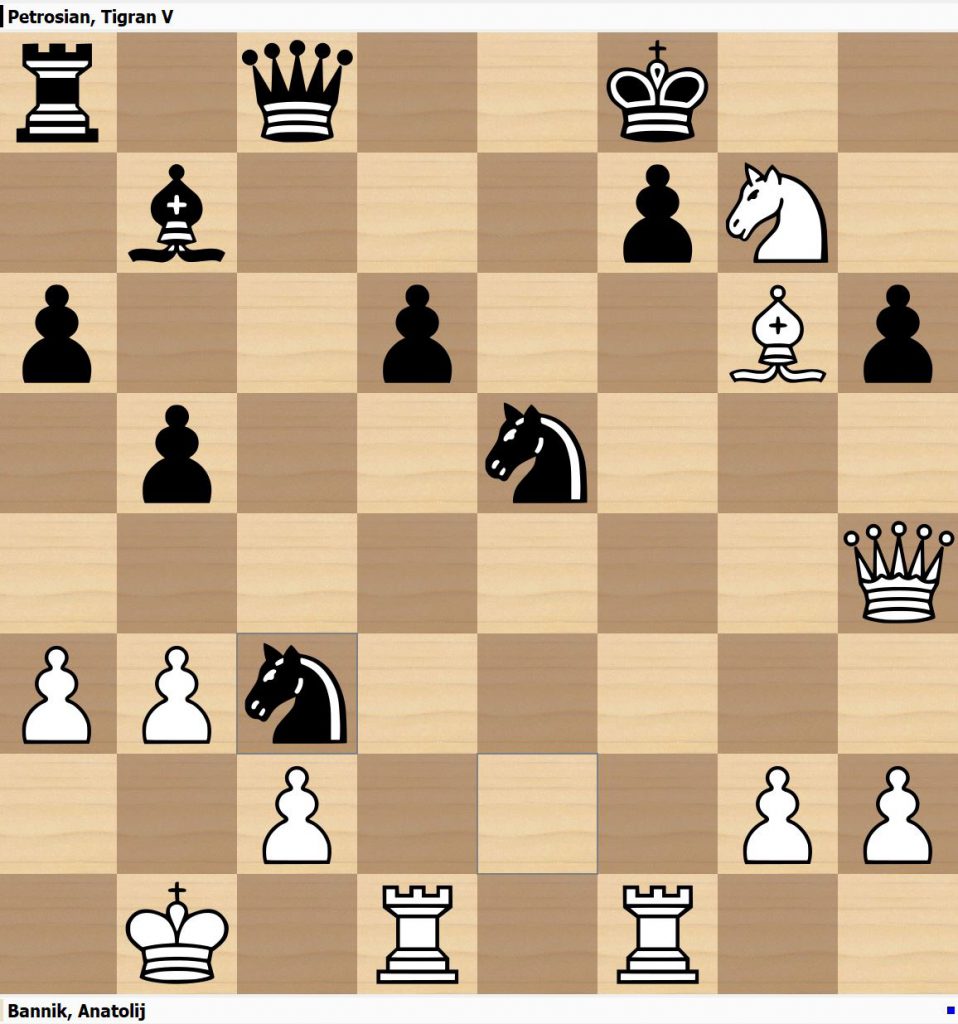
25.Kc1 (25.Ka1 Nxd1 when the deadly threat of … Qc3+ slows down White’s attack) 25…Ne2+ is a draw by repetition.
c) 20…Qxh4 21.Nc7+ Kd8 22.Qxc3 Nxg6 23.Nxa8 Bxa8 24.Rxf7 looked good for White to me
d) 20…fxg6 21.Ng7+ Kd8 22.Bxe7+ Kxe7 23.bxc3 looked good for White to me. 23…Rg8 24.Qxh6 Qxc3 25.Nf5+ is the key idea 25…gxf5 26.Qxd6+
21.Kb1 Bc8

Total panic and now it’s gone!
21…Nxg6 22.Bxe7 looked like the best to me 22…fxe6 (22…Kxe7 23.Ng7 The knight is extremely strong on f5; 22…Nxe7 23.Ng7+; 22…Qxe6 23.Qxe6 fxe6 24.Bxd6 and the knight on e2 will find it challenging to escape) 23.b3 Qe4 24.Bxd6 seemed more pleasant for White though and my engine agrees.
22.Ng7+ Kf8 23.Bxe7+ Kxg7 24.Bf5
White is just masses of material up with a mating attack.
24…Nf4 25.Rxf4 Qxf4 26.Bxc8 1–0
A great game!



